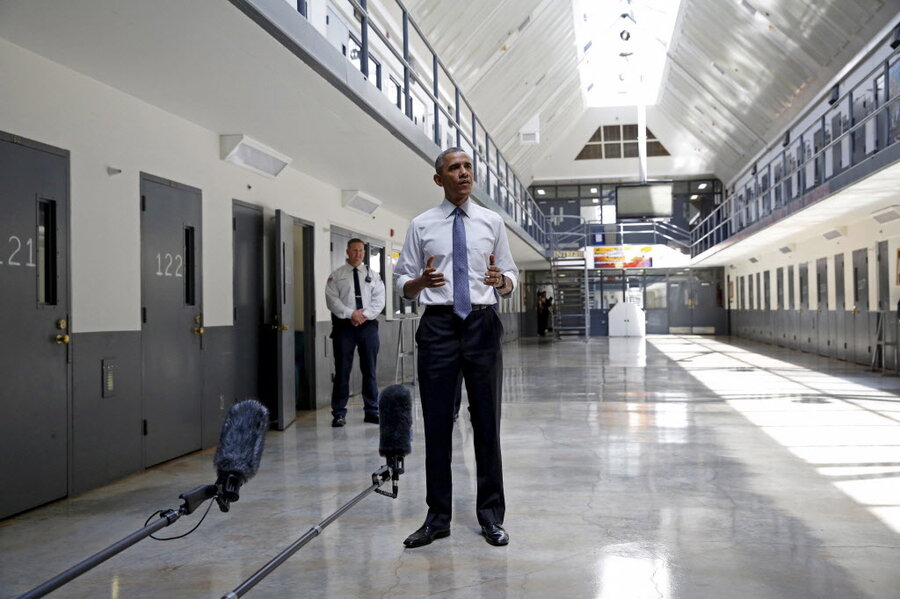Getting up close with the criminal justice system
Loading...
This year marks the 50th anniversary of a landmark report on criminal justice titled “The Challenge of Crime in a Free Society.” Written by a special commission appointed by President Lyndon Johnson, it called for “a revolution in the way America thinks about crime.” While some of the proposed reforms took hold, the “revolution” never really happened. The United States still has one of the world’s highest incarceration rates. Now a bipartisan group in Congress is calling for a new commission on crime.
Yet the question must be asked before yet another federal study: Why are there so many failures at criminal justice reform?
One reason may be that those who set the policy rarely set foot in a prison, met with inmates or their victims, or heard the complaints of correctional and probation officers. Elected leaders rarely gather firsthand evidence about the impact of their choices in criminal justice system or go beyond the statistics.
That may be about to change. Two years ago, President Barack Obama became the first sitting president to visit a prison. And then last month, a bipartisan group of governors and other officials agreed to engage closely with people involved with criminal justice, from victims to wardens to ex-cons.
Colorado Democratic Gov. John Hickenlooper, for example, visited a women’s correctional facility. Missouri Republican Gov. Eric Greitens worked with corrections officers at a prison. North Carolina Democratic Gov. Roy Cooper spent time at a transitional house for ex-offenders.
“We’ve got to turn [prisons] from these very dark places that we try to push out of our thought process and have them foremost in our thought process,” said Connecticut Democratic Gov. Dannel Malloy. “Everybody should know how we treat our neighbor’s children when they make mistakes and what the compounding mistakes of incarceration are.”
The governors are taking part in “Face to Face,” a new initiative by the National Reentry Resource Center and the Council of State Governments Justice Center. The aim is to bring elected officials in close proximity with people in the criminal justice system, or, as Governor Malloy says about visiting a prison, to “understand the dynamic that plays itself out within those four walls.”
Many prisons still do not offer inmates enough assistance to reform themselves while many ex-convicts are not given enough support to reenter their communities and live by the rules of society. Of the nearly 10 million individuals who leave a prison or jail each year, about two-thirds end up re-incarcerated within three years.
Such statistics may not hit home to lawmakers – unless they hear directly from those involved in the system. Simply learning from studies, hearings, or even TV shows may not have the impact needed to ensure government can both protect people from crime and offer successful rehabilitation and treatment to criminals. The best way to study crime may be to show more up-close empathy with all those involved.







